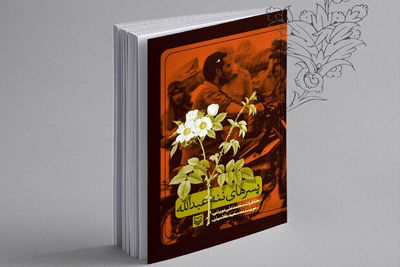The people of the city won't give up and They'll stand and fight to get their city back. Many books such as researchers, short stories, and dairies have been written and published about this event and still much can be written about that situation and people.
The ''Nana Abdullah's Sons'' by Saeed Alamian is one of those books about that battle which has been published by Sooremenr and,it's the result of 40 hours of Nourani interviewing with Alamian, Reading this book, you will laugh and cry a lot, and of course, this is the art of the writer that you can feel the real rhythm of life and believe unbelievable moments.
Mohammad Ali Nourani is one of the people of Khorramshahr who stays in the city during the invasion of Iraq, and not only him but also his family stays to fight to their last breath like his parents and his brothers.
His memories are from his birth to the libereation of Khorramshahr and when the story ends with the end of the war.
The book has also covered some details like the culture of Khuzestan, especially Abadan and Khorramshahr, and a history of the evevts during the Islamic Revolution of Iran and its victory. Besides war and darkness, he has also shown life and beauty.
As stated earlier, this book is about Mohammad Ali Nourani's memories about the libration of Khorramshahr and its battle but despite Mohammad, his four other brothers Abdullah, Gholamreza, Mahmoud, and About Rasool were also in the story, and their mother who mostly is the center of the story and never leaves the battle exceot for a short time when she had to emigrate to Shiraz.
Among these brothers, Abdul Rasool and Gholamreza were martyred and the other three brothers are devotees and that's why this book is named ''Nana Abdullah's sons''. The youngest was 13 years old, and the eldest was Abdullah, the commander of the Beit-ol-Moqaddas Brigade, All four were at war, and their mother is called by his eldesy son.
The reader would see people's resistance and the liberation of Khorramshahr with a new and different perspective and would understand new things about the holy defense that have been less discussed.
''Mr. Nourani is from a generation that no longer exists, those who were also in the Islamic Revolution and then entered the war, Those people were like treasures for that time, and that's why their stories and diaries are what we have to keep, and we can also use them in theater, cinema, litrature, documentaries, etc'' says Alamian, regarding the reasons for writing this book.
Writing the book has also been a long process, both the author and the narrator live in Tehran, but to narrate these memories, they have to go to Mr. Nourani's old house in Abadan so that they can review and write everything down carefully with all the details.
Interestingly, the book exactly narrates how the situation in Khorramshahr was and how it never completely collapsed and always one-third of it was in the hands of the Iranian soldiers.
The book tells about young people who before the war, had fun wearing fashionable clothes and walking along the Karun beach but when the enemy cowardly attacked the city and targeted innocent women and children, they took up arms and started fighting in the streets of Khorramshahr.
Despite numerous injuries, the main character and his brothers participated in all the battles in southern Iran and the book ends with the liberation of Khorramshahr because it was the most important event of the holy defense.
Reading the book, the reader would realize that although the soldiers took a step back after the fall of the city, with the help of the army and other forces did not allow the aggressors to advance and one-third of Khorramshahr was always in the hands of the Iranian defense forces, and contrary to what most of us thought, Khorramshahr was never completely occupied by the Iraqi army.
Khorramshahr forces participated in the large-scale operation in Beit-ol-Moqaddas in May 1961 with forming the 22nd Badr Independent Brigade. Seyyed Abdolreza Mousavi and many of his companions are martyrs of this operation and the narrator has explained how they were martyred.
He considers this victory for all the people of Iran and says: “The children of Khorramshahr resisted to protect Khorramshahr for all the people in thirty-five days and the people returned Khorramshahr to the people of Khorramshahr in twenty-three days too”.
Source:Tehran Times

